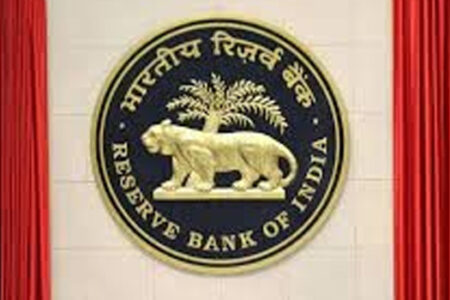India’s first 50-year bond, issued early this month, is a resounding success. The insurance and pension funds rushed to lap up the ultra-long paper. The Rs10,000 crore 2073 paper’s cutoff yield at the auction was 7.46 per cent, lower than what a Bloomberg survey had forecast — 7.48 per cent. As I write this column, the yield of this paper is veering around 7.42 per cent.
Prices and yield of a bond move in reverse directions. This means, if the yield rises, the prices drop and investors lose out. With the Reserve Bank of India (RBI) allowing commercial banks to hold their entire bond portfolio (both government and corporate papers) in the so-called held-to-maturity (HTM) category from the next financial year, even if the yield of a XXX bond rises and its price drops, they will not suffer any mark-to-market losses.
MTM is an accounting practice, which reflects the true value of an asset in the current market price. This means if the value is eroded (the current price is lower than the price at which a bond is bought), the banks need to provide for it or set aside money.
Even if Indian banks will be spared MTM losses, theoretically they run interest rate risk for longer term sovereign papers. The collapse of the Silicon Valley Bank (SVB) is still fresh in our memory.
But that was a different story. The longest tenure Indian bond was picked up primarily by insurance companies, provident funds, and pension funds.
Globally, the demand for long-term bonds has always been there, even for 100-year bonds. Insurance and pension funds have an appetite for long-term papers as it helps them meet certain duration goals on their commitments to policyholders. Particularly when the Indian insurance regulator has been pushing hard for the expansion of the sector, bringing every Indian under the insurance cover, the 50-year paper is par for the course. Overseas, the university endowment funds also find such papers attractive as the institutions live long and they may not need funds at the drop of a hat.
If more such papers hit the market, they will create a long-term yield curve and may encourage highly rated corporations to float such papers.
Finally, long papers will also help manage the fiscal borrowing of the government because the long duration papers do not come for maturity quickly; hence the gross borrowing number will remain contained if the RBI borrows more on the longer end of the curve.
Some long-term papers carry call and put options — after a certain period the issuer can call back the paper, paying off the investors. The investors, too, can get out of it. For instance, the 100-year corporate bond issued by Walt Disney Company in 1993 will mature in 2093, but the company can redeem the bonds any time after 30 years (2023). Coca-Cola too has issued a 100-year bond.
Even 1,000-year bonds do exist. The Canadian Pacific Corporation has issued such a bond. There are also bonds with no maturity date. They are called perpetuities. In such papers, the issuer continues to pay coupon payments forever. The UK government has issued such bonds, called “consols”.
While issuers, be it a corporation or a sovereign, source stable money through this route, investors run the interest rate risk. If they need to sell such a bond when its yield is very high, they lose tonnes of money.
In September 2019, an Economist report highlighted how Austria’s 100-year bond delivered stunning returns. Since 2017, Austria’s 100-year bond has given a whopping 75 per cent return. That was the time when bond yields dropped dramatically (and the prices rose). The same magazine’s July 2023 report says Austria’s century bonds have cost investors dearly (because of rise in yield and drop in prices).
The plummeting value of the 100-year debt illustrates how the fixed-income environment has changed.
“It’s been a rough couple of years for bond investors as yields have soared. As with any sharp change in market conditions, there were some roller coasters to avoid. Top of the list are the trailblazing 100-year bonds sold by Austria. It’s a tale of how fast things change — and is likely to consign century bonds to the category of curiosities from the era of super-low yields,” the second Economist report says.
Austria launched its first century bond in 2017, paying a coupon of 2.1 per cent. Its second 100-year bond, offering 0.85 per cent, hit the market in 2020.
In June 2017, a year after it settled a decade-long dispute with creditors over its default in 2022, Argentina, too, sold a100-year bond for $2.75 billion. President Mauricio Macri, who was instrumental in the nation’s re-entry into the fixed income market, was out in 2019. In 2020, Argentina restructured the century bond, following a default. The investors lost around 40 per cent.
Between 2017 and 2019, Belgium and Ireland joined Austria and Argentina in issuing century bonds, and Israel did so in 2020. When the bond yield plummeted, governments around the world rushed to reap the benefit of lowering the borrowing costs to bridge fiscal deficits. At least 34 nations, belonging to the 38-nation Organisation for Economic Co-operation and Development (OECD), have issued sovereign debt maturing between 40 and 100 years.
Peru placed a 100-year bond in 2020. Incidentally, Mexico, an emerging market and also a member of OECD, had issued a 100-year bond much ahead of others — in 2010.
Historically, the most popular maturity for ultra-long bonds has been 50 years while bonds maturing in 30 years and a century — at bond ends of the long term — make appearances in the market off and on, depending on the economic scenario and interest rates. Reeling under the Covid-19 pandemic, Germany’s state of North Rhine-Westphalia (NRW) raised Euro sign 2 billion, selling a 100-year bond in January 2021. France followed with the announcement of its first 50-year bond.
The exception to the ultra-long trend may be the United States, the world’s biggest single sovereign borrower. It sold 20-year bonds in 2020 for the first time since 1986. The longest US government bonds have a maturity of 30 years. In August 2019, when the interest rate was very low and the 30-year bond yield dropped below 2 per cent for the first time, the media carried news that the US treasury was exploring the issuance of ultra-long bonds. The Obama administration, too, had toyed with it after the 2008 financial crisis and Treasury Secretary Seven Mnuchin again proposed this in 2017. The idea of a perpetual bond was also explored in 2019.
The yield of a US 30-year paper, issued at a coupon of 0.69 per cent on March 9, 2020, rose to 5.17 per cent on 23 October. A 50-year Australian paper issued on April 20, 2021, at 0.7 per cent coupon, has 3.3 per cent yield now. That’s how the value has been eroded. Austria’s century bond (mentioned earlier), issued at 2.1 per cent coupon in 2017, saw 75 per cent value erosion in the second week of October.
For financial intermediaries globally, interest rate risk seems to be higher than credit risks (loans turning non-performing assets) at this point. Fortunately, India is a different story. Both the rise in inflation (vis-à-vis the target) and policy rate is far more modest in India than in most developed nations. And India’s growth story is the talk of the town.
This column first appeared in Business Standard.
The writer, a Senior Adviser to Jana Small Finance Bank, writes Banker’s Trust every Monday in Business Standard.
Latest book Roller Coaster: An Affair with Banking
Twitter: TamalBandyo
Website: https://bankerstrust.inThe rise and rise of personal loans



